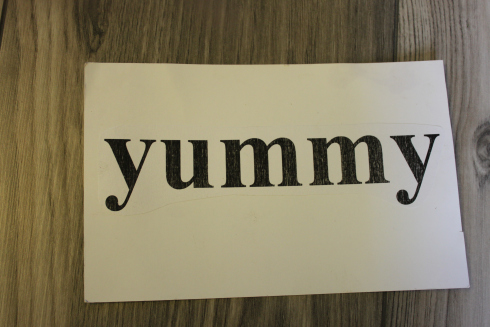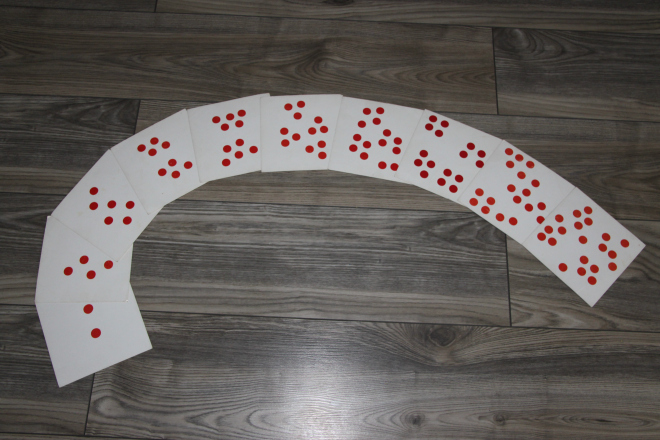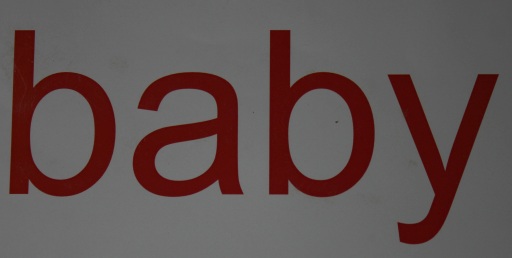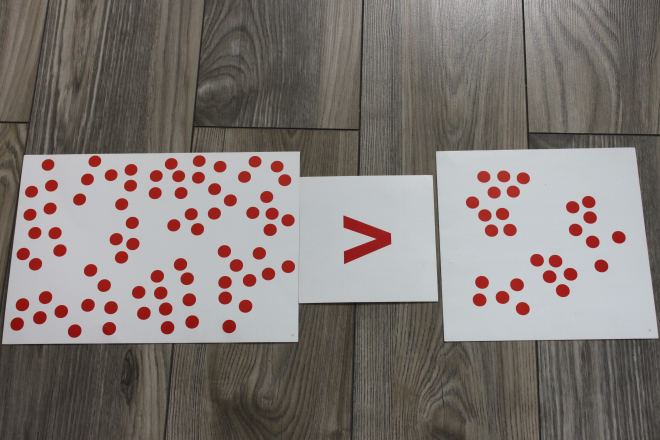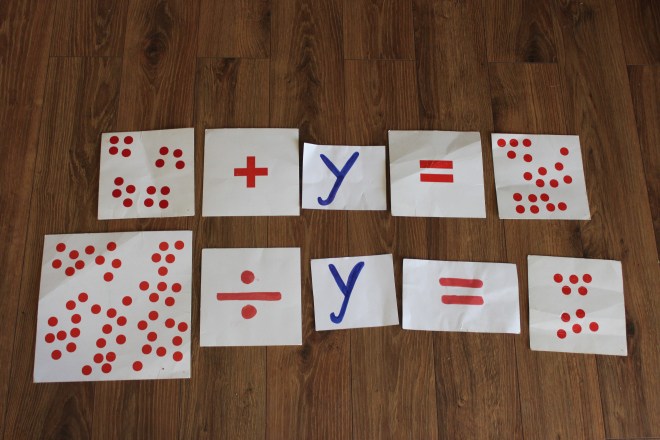
MATHS
SIMPLE ALGEBRA WITH A VARIABLE QUANTITY REPRESENTED BY A LETTER
Since my last post we have completed the last of Doman’s suggestions – equations with a variable. Following his suggestion included in the book „How to Teach Your Baby Math,” I replaced the letter “x” commonly used as a variable with the letter “y.” This was necessary because the letter “x” is similar to the multiplication sign and this may confuse a baby.
I devoted one week to equation presentations e.g. 5+ y = 10 during which I asked a question: What does „y” stand for in this equation? and immediately after that I provided the solution saying: „It stands for 4” and putting down the card with 4 dots on the “y” card.
Maja had the opportunity to see 3 such equations 3 times daily. She demonstrated great interest in those equations for the first few days. Then, I had the impression she was becoming less and less interested. Maybe it just got too easy and too predictable for her. It’s a pity I will never know what the reason was behind her losing interest and what she was thinking at that time. However, if we adopt Doman’s faith that tiny children are geniuses and that they are just bored if something is too easy or presented too slowly, we can assume she was just bored because she needed something more complicated.
After a week, I started giving her problem-solving opportunities with two options of possible solutions to choose from. During the previous steps she really enjoyed choosing the proper card and she did it eagerly and, to my delight, she often chose the correct one. She demonstrated a zero interest in problem-solving opportunities with equations with a variable. She was just looking at the cards and not moving at all. I didn’t force her in any way and after a few seconds of waiting I simply gave her the solution.

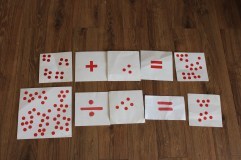
FIBONACCI NUMBER SEQUENCE AND OTHER SEQUENCES
I find maths really thrilling now and this is amazing. I can say I am rediscovering it. We have already completed number sequences but one of my students inspired me to do more. During our conversations we started talking about maths and he told me that something like Fibonacci sequence exists and he explained what it is (by the way, we sometimes have really unusual discussions :P). As such a sequence wasn’t among those already presented to Maja, I showed it to her the next day. I used all the cards available. The sequence is characterized by the fact that every number after the first two is the sum of the two preceding ones which is shown in the photo below:
0,1,1,2,3,5,8,13,21,34,55, 89
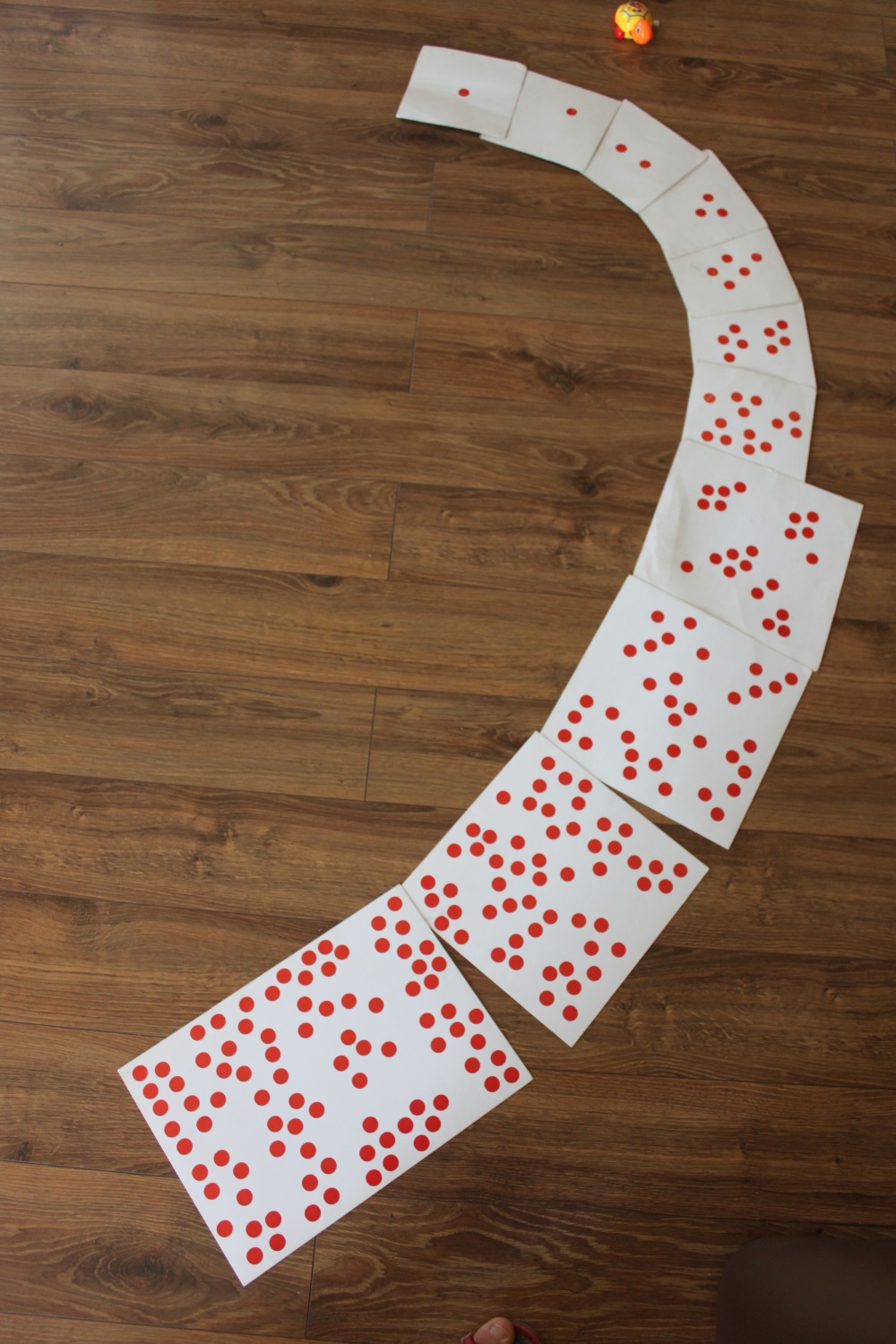
It stirred up my curiosity and interest to such an extent that I started browsing the net in the need of learning more and I found other similar number sequences:
–Tribonacci sequence in which we add up the three preceeding numbers: 0, 0, 1, 1, 2, 4, 7, 13, 24, 44, 81
–Tetrancci sequence in which we add up the four preceeding numbers: 0, 0, 0, 1, 1, 2, 4, 8, 15, 29, 56
–Lucas sequence – it is a variation of Fibonacci sequence (the difference is in the first numbers but the rule is the same:we add up the two preceding numbers): 2, 1, 3, 4, 7, 11, 18, 29, 47, 76
This is everything we can do with number sequences. My baby is now familiar with geometric sequences (e.g. 3,9,27….), arithmetic sequences (e.g. 4,5,7…) and recurrent sequences (those described in this blog entry). Our beginning with this part of maths is described here.
ENRICHING BABY’S VOCABULARY
FAMILY MEMBERS AND VERBS
I have already completed all flashcards with parts of the body and appearance. Soon after that I added the cards with “mummy mouse,” “daddy mouse” etc. just because they are in my collection.
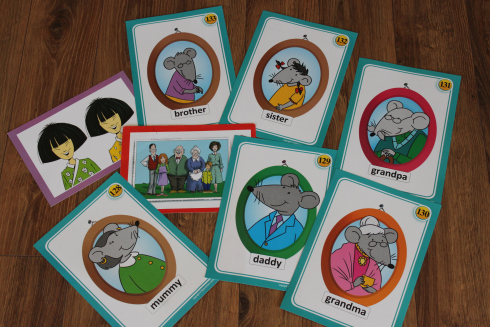
Because I don’t have many family flashcards I have decided to start a really big set of action verbs flashcards.
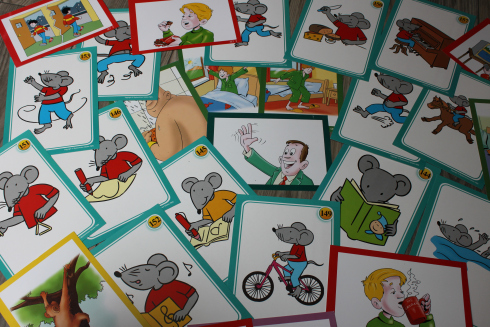
WHOLE -WORD READING
MORE WORDS BECAUSE OF MAJA’S INITIATIVE
We still continue reading the personalized books because Maja loves them. She calls herself “mama” as well because she can’t pronounce her name “Maja” yet. The following pictures show her interest in these customized books which I created for her
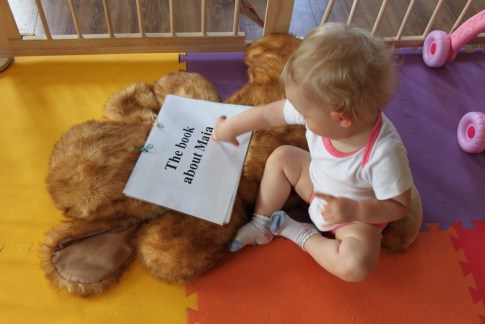
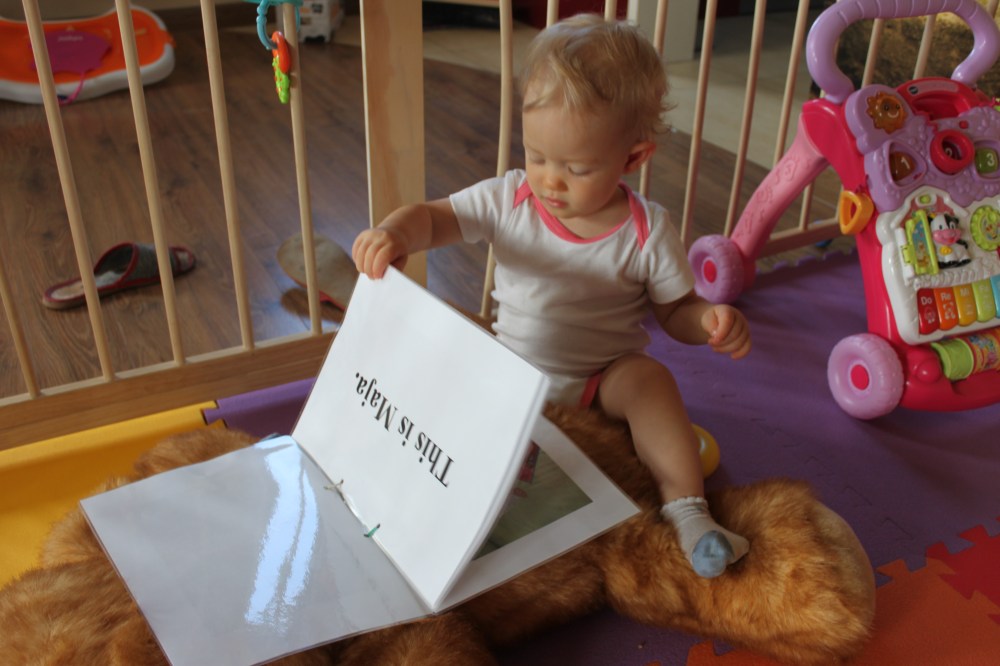
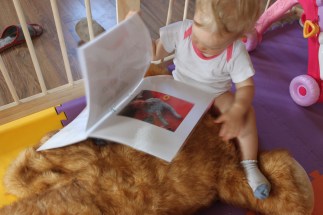
We do jumble sentences from time to time which I mentioned here. However, I think Maja is too little for this. This is usually me who creates a sentence out of various words. She sometimes gives me the cards. As my cards are of different sizes and colours we have a real jumble now.
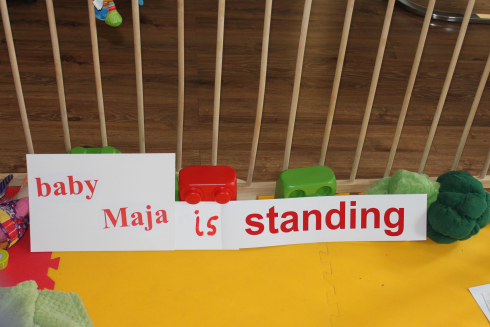
In the meantime, there have been more and more English words. Last time I mentioned “cheetah.” Soon after this Maja started saying “touch” and “yummy” without any incentive on my part. Whatever she says it is immediately printed if it has not appeared on one of our read-made cards yet. I present new word in the old style meaning 3 times daily for 5 consecutive days. Although we have completed sentences written with the use of quite a small font, the single words I print are quite big. There are even more new words in the Polish language but Maja’s father is not at this step yet with his part of the programme. He has only 1 set of cards which he presents 3 times daily and that is why he is still doing single red words. It seems too much for him because he is really disorganized. Nevertheless, we are making progress with the Polish cards because I ask everybody who is a Pole and who visits us to present the cards whenever possible. For obvious reasons (I am responsible for the English language) I keep away from the Polish cards which means I never present them. However, I have them on mind constantly looking for somebody who can show them: my mum, my friend or my sister – everybody who is Polish.
I guess my husband will complete his part of the programme in 2 years I don’t mind it because up to the age of 6 the brain is like a sponge so we have lots of time. However, Doman claims the earlier, the better, especially when it comes to maths. According to him the ability to recognize quantities perfectly is the strongest between birth and thirty months and later on it becomes weaker and weaker until it disappears completely if not used. He believes tiny children can recognize at a glance if there are 98 or 99 dots on a card. I believe it, too however ridiculous it sounds. After all, I have to believe in what I am doing with my baby and the future will show the results.
